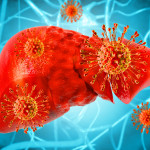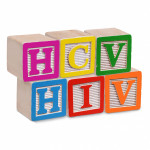Curing hepatitis C virus (HCV) in those coinfected with HIV provides the greatest chance to reduce the risk of death among those who have advanced fibrosis (liver scarring).
Researchers reached this conclusion by analyzing 2003 to 2016 data on a group of 1,477 people with both viruses who received medical care at 18 clinics across Canada and who were followed for a median 4.1 years, during which 14 percent of them died.
Cohort members were 4.5 times more likely to die of end-stage liver disease (ESLD)—20 percent of the deaths were due to this cause—if they had not been cured of hep C. They were a respective 4.6 times and 3.7 times more likely to die of ESLD if they had advanced fibrosis and a CD4 count below 350.
According to the study’s lead author, Nadine Kronfli, MD, MPH, a postdoctoral research fellow at McGill University Health Centre, these findings indicate that efforts to expand hep C treatment should prioritize those with advanced fibrosis because treatment will prove most lifesaving among them.
“For those at lower risk of end-stage liver disease,” Kronfli says, “while HCV treatment may have other benefits such as reducing transmission, focusing on interventions that target modifiable risk factors such as substance abuse and tobacco smoking will have the greatest impact on mortality in the short term and should be integrated into routine HIV and HCV care.”






Comments
Comments